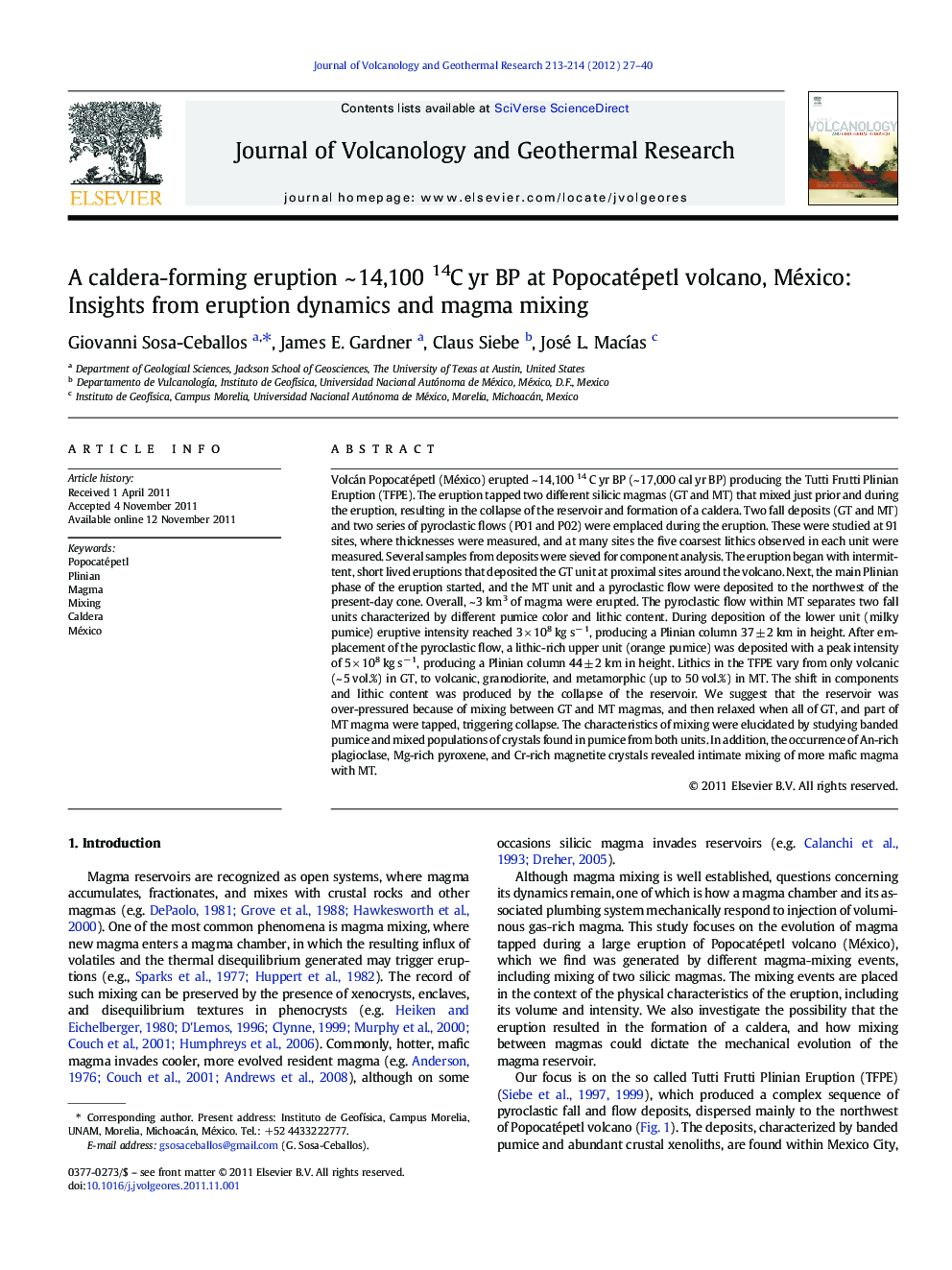| کد مقاله | کد نشریه | سال انتشار | مقاله انگلیسی | نسخه تمام متن |
|---|---|---|---|---|
| 4713713 | 1638390 | 2012 | 14 صفحه PDF | دانلود رایگان |

Volcán Popocatépetl (México) erupted ~ 14,100 14 C yr BP (~ 17,000 cal yr BP) producing the Tutti Frutti Plinian Eruption (TFPE). The eruption tapped two different silicic magmas (GT and MT) that mixed just prior and during the eruption, resulting in the collapse of the reservoir and formation of a caldera. Two fall deposits (GT and MT) and two series of pyroclastic flows (P01 and P02) were emplaced during the eruption. These were studied at 91 sites, where thicknesses were measured, and at many sites the five coarsest lithics observed in each unit were measured. Several samples from deposits were sieved for component analysis. The eruption began with intermittent, short lived eruptions that deposited the GT unit at proximal sites around the volcano. Next, the main Plinian phase of the eruption started, and the MT unit and a pyroclastic flow were deposited to the northwest of the present-day cone. Overall, ~ 3 km3 of magma were erupted. The pyroclastic flow within MT separates two fall units characterized by different pumice color and lithic content. During deposition of the lower unit (milky pumice) eruptive intensity reached 3 × 108 kg s− 1, producing a Plinian column 37 ± 2 km in height. After emplacement of the pyroclastic flow, a lithic-rich upper unit (orange pumice) was deposited with a peak intensity of 5 × 108 kg s− 1, producing a Plinian column 44 ± 2 km in height. Lithics in the TFPE vary from only volcanic (~ 5 vol.%) in GT, to volcanic, granodiorite, and metamorphic (up to 50 vol.%) in MT. The shift in components and lithic content was produced by the collapse of the reservoir. We suggest that the reservoir was over-pressured because of mixing between GT and MT magmas, and then relaxed when all of GT, and part of MT magma were tapped, triggering collapse. The characteristics of mixing were elucidated by studying banded pumice and mixed populations of crystals found in pumice from both units. In addition, the occurrence of An-rich plagioclase, Mg-rich pyroxene, and Cr-rich magnetite crystals revealed intimate mixing of more mafic magma with MT.
► The Tutti Frutti Plinian Eruption, Popocatépetl, México, is ~ 14,000 years old.
► Comprises 2 silicic magmas, one of which underwent intense mixing with mafic melts.
► Silicic magmas were stored at different depths.
► When they mixed, eruption was triggered producing a caldera collapse.
Journal: Journal of Volcanology and Geothermal Research - Volumes 213–214, 1 February 2012, Pages 27–40